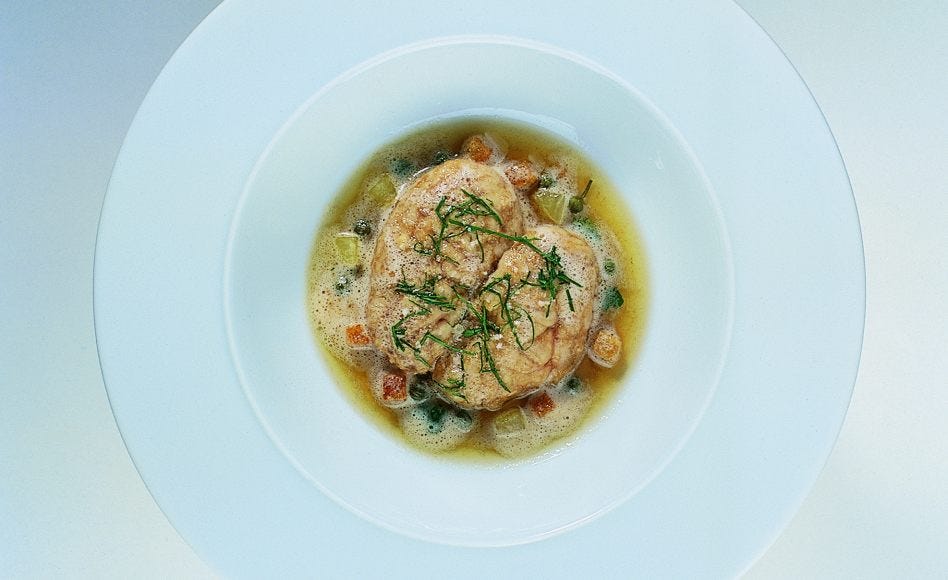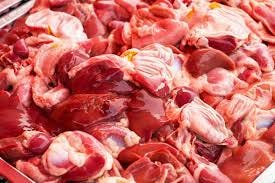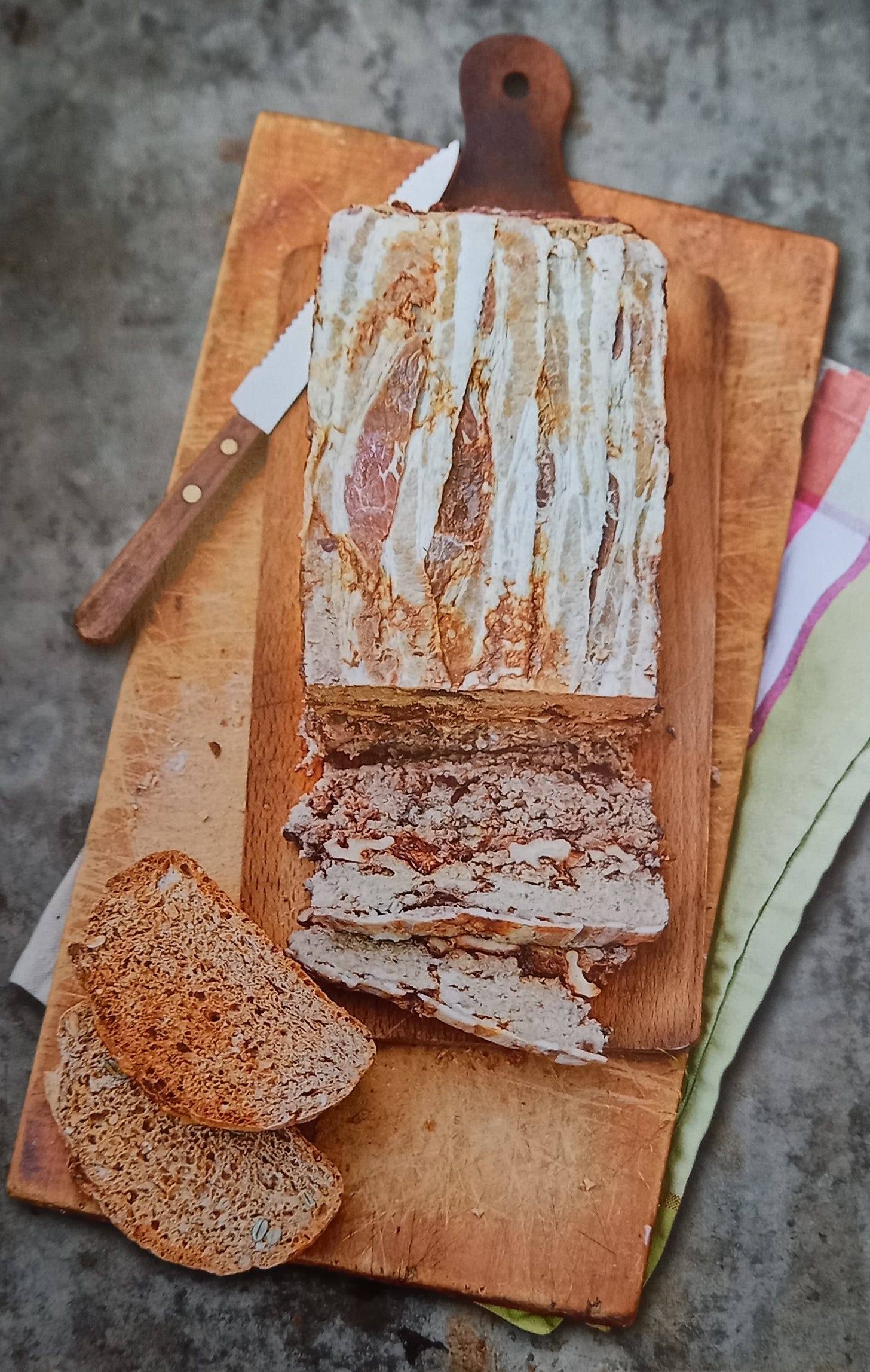Boost your budget and the planet? Eat offal
A recipe for Duck, pork and prune pâté
While you have been munching on your barbecued hamburgers, I - in deepest France - have been celebrating a summer’s day with gently sautéed lamb brains. My cousin in Rome, tripe capital of the world, once e-mailed me excitedly of his encounter with a dish of small intestine of calf still containing its grass-fed mother's clotted milk.
You are probably now in a dither about whether to report my extended family and me to the Prevention of Cruelty to Animals people, or rush off somewhere to throw up.
The point, though, is that we have distanced ourselves in the industrialized world so far from food that once was commonplace. Eating offal was the result of a horror of waste. When people were poor, nothing could be thrown away. Every part of the beast was consumed, from nose to tail.
In many parts of the world, it’s still the case. Nose-to-tail-eating describes the menu of Fergus Henderson, the notable British chef, who made his reputation on cooking every neglected piece of every animal butchered for his renowned St John’s restaurant in London’s Smithfield.
In Greece on Easter Saturday, the day before the spit-roasted Pascal lamb is brought to the table, magiritsa is served - a soup made from lamb offal and tripe with cos/romaine lettuce, fresh herbs, masses of minced garlic and an avgolemono egg-lemon sauce, so that none of the creature is wasted. The Chinese do remarkable things with pigs’ feet, with intestines, and with other bits you would never recognise from their floral descriptions on a menu. Pressed tongue is a British and European tradition. Authentic Scottish haggis is a mixture of the heart, liver and lungs of a sheep, boiled with suet, onion and oatmeal inside the sheep’s stomach. Filipino papaitan is a goat stew of tripe, liver, intestines, pancreas, kidney, heart - and bile. Morcilla is a Spanish blood sausage. Iraqi pacha is boiled sheep’s head. Sweetbreads, treasured in France, are not for dessert. They describe the thymus and sometimes the pancreas of a young calf, just as prairie oysters have nothing to do with molluscs. Those are most commonly the testicles of a male calf. Bon appétit. They’re both delicious, as is the rest.
I will spare you any more references - and photos of the dishes mentioned. But we are again facing poverty on an unprecedented scale. A German study has shown that if we ate more of an animal’s cheap gnarly bits, an animal’s environmental footprint would reduce, causing meat emissions to fall by 14 percent. If food waste were a country, it would be the third largest emitter behind the USA and China. Whatever the slogans say, carbon reduction isn’t for the sake of the planet - that will survive. It’s about us. We won’t.
Unlike the globally popular processed burger that boasts it is 100 percent beef (leading to the urban myth that this is because the cow goes snout, skin, hair, hoofs and all into a massive grinder and comes out the other as meat spludge), offal can’t be presented in the palatable disguise of a patty of uniform texture. Instead, each element is celebrated for what it is, and carefully cooked to coax from it the best flavour and quality.
Soon, though, we could be eating meat that has nothing at all to do with a recognisable beast. Britain’s Food Standards Agency has just launched a 5-year strategy for a system in which food is “healthier and more sustainable”. Part of this project is an increase in lab-grown meats.
With Brexit and the dismissal of EU regulations, the Genetic Technology (Precision Breeding) bill has been introduced into Parliament. If it passes, gene-editing will be approved for commercial use and crop growth in the UK. For decades, the UK has successfully resisted genetically modified organisms - with the backing, even, of the Daily Mail, which christened them “Frankenfoods”.
There is likely to be market resistance to meals which begin life on a laboratory slide. While 42 percent of people in a recent survey by the FSA had never actually heard of gene-edited food, and with 9 percent never having heard of genetic modification (where have you been, people - marooned on Twitter and Insta?), 59 percent of people who were aware of it said they absolutely did not want to eat or even sample lab-grown meat. Could they be persuaded to consume the funky bits of an animal?
Another reason not to dismiss consumption of four-hooved meat entirely is revealed in a study of 26,000 women published by BMC Medicine: those following an exclusively vegetarian diet were revealed to be 33 percent more likely to suffer a hip fracture.
Vegetarian diets were found to have a lower content of nutrients linked with bone-and-muscle-content proteins than diets that included meat. Not to worry, though, these guinea pigs were only middle-aged women - although middle age apparently now begins at 40. Why they only tested women isn’t clear. Men are more sedentary? Their meals are served to them by obsequious subservient females who frequently trip over rugs?
Those vegetarians whose dietary choices are based on a philosophical not a gustatory choice, and those meat eaters who aren’t enthusiastic about steak manipulated in a petri dish, might consider following the example of nations that respect an animal enough that they don’t waste any single part of it.
If we could, instead or as well, encourage people to eat every element of an animal, that would introduce extra nutritional values to their constitutions at no great financial outlay, show respect to the creature, and decrease waste.
Pâté might be your starter step towards eating offal. This is a rough pâté I’ve glamorised a bit with strips of duck, prunes and walnuts. It isn’t offal, although pâté does include liver, as here, but it could introduce you to the texture that some offal provides.
Serves 10-12
2 duck breasts, about 300g/10½oz each, skin removed and reserved
200g/7oz thinly sliced streaky bacon rashers
1kg pork shoulder, cubed
2 slices bread, crusts removed
100ml/6¾ tablespoons milk
3 shallots, roughly chopped
1 large garlic clove, roughly chopped
200g/7oz duck or chicken livers, roughly chopped
6 black peppercorns
12 coriander seeds
2 cloves
2 tablespoons Cognac or brandy
2 eggs, beaten
1 teaspoon salt or more to taste
60g/2¼oz walnuts, roughly chopped `
12-14 pitted Prunes d’Agen or regular prunes, roughly chopped
Preheat oven 160C.
Roast duck breasts and skin in a shallow dish 20 minutes. Pour off fat into a bowl, discarding skin. Reserve 6 bacon rashers. Roughly chop the rest and the cooked duck. Mince all meats to a coarse texture in a processor or meat mincer, in batches. Tip into a large bowl.
Tear up bread and soak in the milk 5 minutes. Squeeze out milk and process bread to a coarse texture in processor with shallots, garlic and livers. Add to bowl.
Grind peppercorns, coriander seeds and cloves to a rough powder. Add to meats with 4 tablespoons reserved duck fat, Cognac, eggs and 1 teaspoon salt. Mix everything thoroughly with your hands.
Press half the mixture into a 1.5-litre/6¼ cup loaf tin. Scatter over walnuts and prunes. Cover with remaining meat mixture. Lay reserved bacon rashers over the top, folding ends under. Cover the dish tightly with foil, put in a roasting tin and pour boiling water into the tin to come halfway up the sides of the tin.
Bake 2 hours, remove foil and bake for 15 minutes more to brown the top. Cool completely, then wrap in fresh foil and chill at least 2 days to mature. Eat with cornichons and crusty bread.





I always, always learn from Julia...another keeper.
Thank you for a thought and laugh provoking essay. I once went with a group of fellow gastronauts to a restaurant in DC's Chinatown that had a separate offal menu; we ordered every dish on the menu. The table soon filled with platters of several preparations of pig intestine, duck tongues, duck feet, and duck blood. Ginger and garlic made a mighty effort, but the funk was still the primary flavor profile. I enjoyed the experience, but never repeated it. A little bit of duck blood goes a long way. Which leads me to a note of disappointment found in your recipe: crispy duck skin is perhaps the most delicious by-product of cooking duck, yet you would have us discard it! Even if you don't want to include it in your terrine, it can be retained for garnishing a salad or any number of other dishes, or just a snack for the cook!